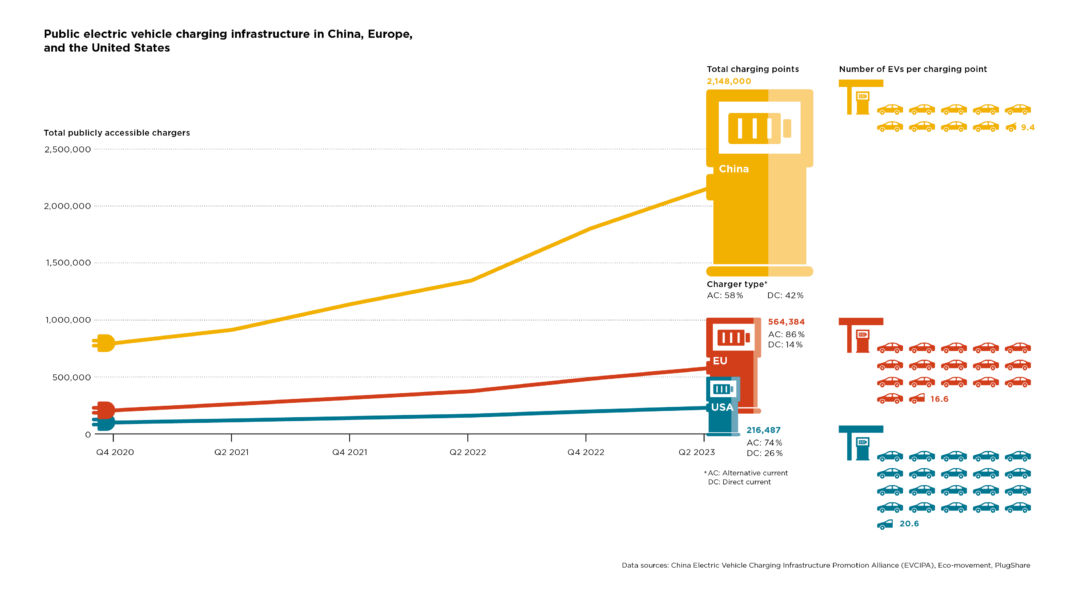4 Technologies and key parameters
Over 560,000 publicly accessible charging points were installed in the EU by mid-2023, a 50 percent increase over the previous year and more than double the total from mid-2021. While expansion in the United States continues to be limited, China is the global leader in charging infrastructure for light-duty vehicles, with nearly 2.15 million publicly accessible charging points by mid-2023. In terms of access, there is one charging point for every 9.4 vehicles in China, compared to 16.6 vehicles in the EU and 20.6 vehicles in the United States. China’s infrastructure also stands out in its significant share of fast (DC) charging, making up 42% of public charging points, versus only 14% in the EU and 26% in the United States.
The decline of market shares of diesel cars sold in the EU continued in 2022, falling to just 20%, down from 44% in 2017 (Fig. 4-1). Diesel shares dropped for all brands in 2022, with the exception of Audi, where the share in the EU-27 remained at roughly 38% (Fig. 4-6).
Meanwhile, the market share of HEVs climbed to over 8% in 2022. Sales of HEVs were particularly strong in Finland, where they reached an 18% share in 2022, followed by Ireland (17%) (Fig. 4-2). The hybrid electric market continues to be dominated by Toyota, which made up 73% of HEV registrations in 2022 (Fig. 4-7).
BEVs accounted for 12% (+3 percentage points from 2021) of all new car sales in the EU-27 in 2022, and PHEVs made up another 9%. Sales of PHEVs were particularly high in Sweden, Finland, and Denmark, although shares in each of the countries fell compared to the previous year, dropping between 1 and 4 percentage points. The Volvo brand continued to have to highest share of PHEVs, with (37% in 2022 (Fig. 4-3, Fig. 4-8). BEV sales jumped in Sweden to 34% from 19% in the previous year. Looking at the largest manufacturers, Fiat (17%) and Renault (16%) sold the highest shares of BEVs in 2022 (Fig. 4-4, Fig. 4-9). For light commercial vehicles, the EU market share of BEVs increased 67% over 2021 (Fig. 4-12).
The average engine power of new passenger cars in the EU also increased to 109 kW in 2022, which is 47% more than in 2001. Vehicles in Sweden and Germany, with average engine power values of 130 kW and 150 kW, respectively, were also the heaviest, at an average of 1,787 kg and 1631 kg, respectively. In contrast, Italy’s vehicles had an average engine power of 88 kW and weight of 1,387 kg (Fig. 4-13, Fig. 4-16).


